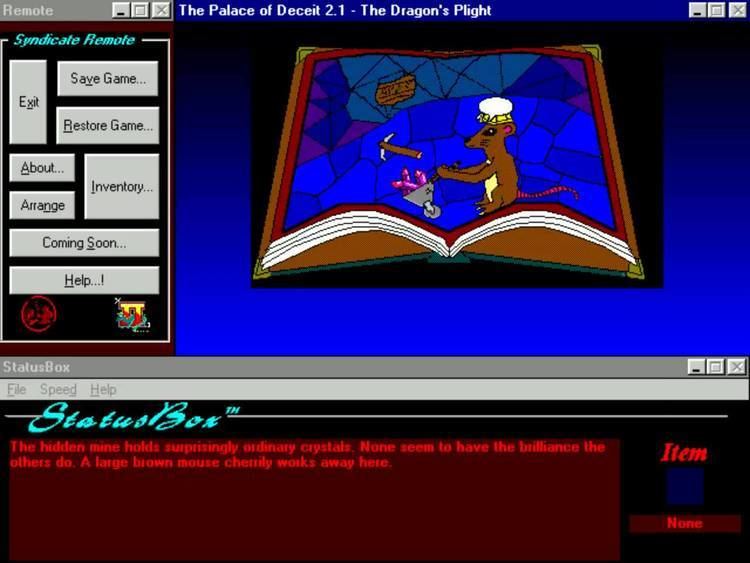8.8 /10 1 Votes8.8
Mode(s) Single-player Platforms Microsoft Windows, DOS | 4.4/5 My Abandonware Artist(s) Cliff Bleszinski Initial release date 1991 Genre Adventure game | |||||||||||||||||||||||||||||||||
 | ||||||||||||||||||||||||||||||||||
Distributor(s) Innervision Software (Windows) Developer Game Syndicate Productions Publisher Game Syndicate Productions Similar Cliff Bleszinski games, Adventure games | ||||||||||||||||||||||||||||||||||
Leo solos the palace of deceit part 1 hey bufford
Palace of Deceit is a video game independently coded, designed, composed and developed by Cliff Bleszinski in 1991 in his own company Game Syndicate Productions. The first edition subtitled The Secret of Castle Lockemoer was a Text Adventure for DOS. In August 31, 1992, it was remade for Windows 3.x and subtitled The Dragon's Plight as a graphical Point-and-click Adventure game with an entirely new plot and graphics. Both games are played in a first-person perspective and have been released as Freeware.
Contents
- Leo solos the palace of deceit part 1 hey bufford
- The Secret of Castle Lockemoer
- The Dragons Plight
- Legacy
- References
The Secret of Castle Lockemoer
In the original game, the player has the role of a man from the future brought to the medieval past by a good wizard to enter the castle Lockemoer and destroy the Evil Wizard. The game is a Text Adventure which uses occasional graphics which are created using ASCII.
The Dragon's Plight
In this remake, the player has the role of the dragon Nightshade, who has been captured by the evil wizard Garth and thrown into the dungeons. Nightshade seeks a way out of the castle and a way to destroy Grath for his campaign to wipe out dragonkind from the land of Salac. The game is a Point-and-click Adventure which has some similarities to Shadowgate and Déjà Vu, but it entirely lacks music and sound. Sometimes there are death encounters for the player so that the player will have to restart or load a saved game.
Legacy
Cliff Bleszinski presented his game to Tim Sweeney and gained a place in the Epic MegaGames company. He would use the game engine and interface of The Dragon's Plight for his next Point-and-click adventure game Dare to Dream.
